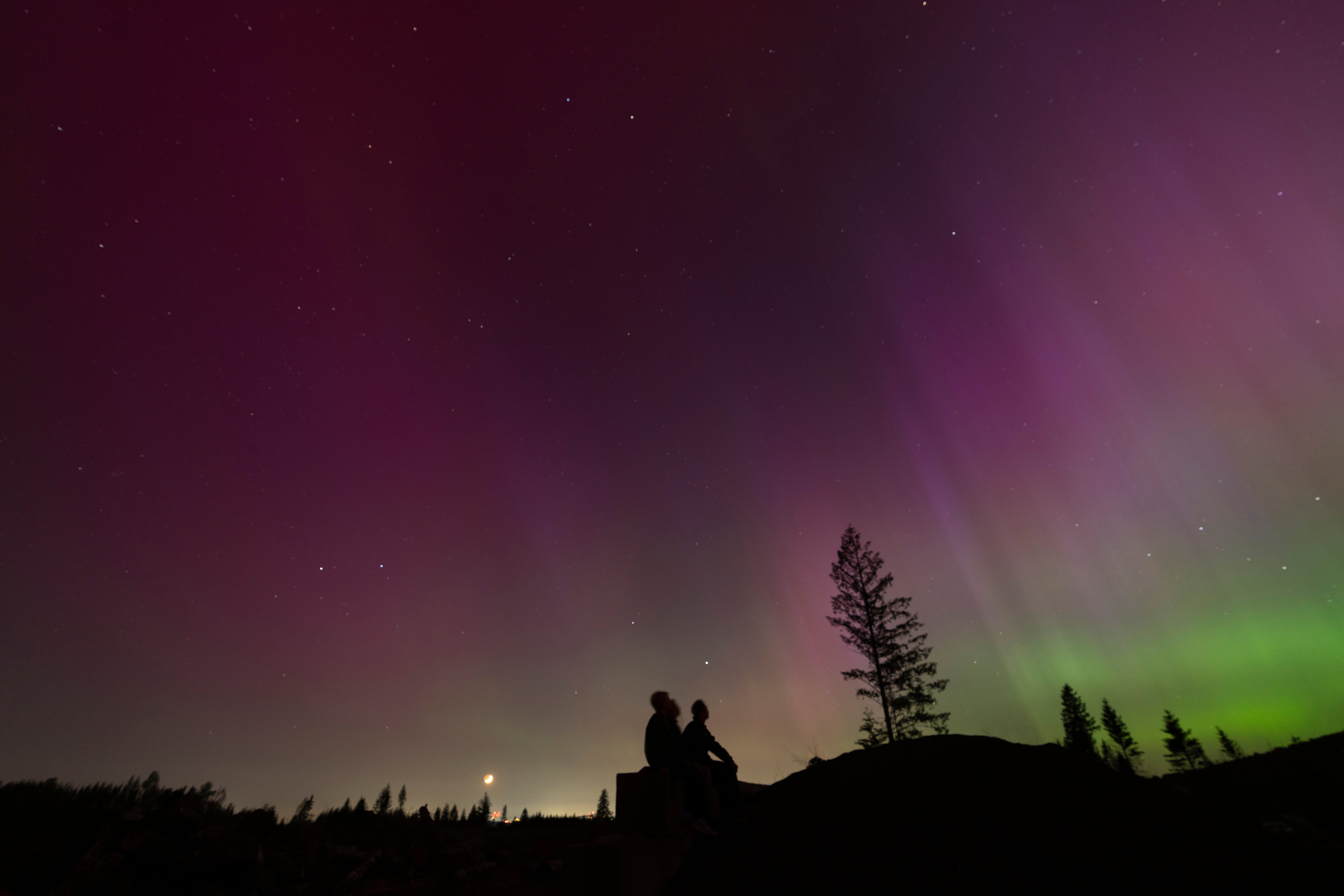Solar storms may cause faint auroras overnight in parts of Northern Hemisphere
People in Canada and northern U.S. cities like Seattle and Minneapolis may see faint auroras late Thursday night and into Friday morning due to moderate solar storms

Your support helps us to tell the story
From reproductive rights to climate change to Big Tech, The Independent is on the ground when the story is developing. Whether it's investigating the financials of Elon Musk's pro-Trump PAC or producing our latest documentary, 'The A Word', which shines a light on the American women fighting for reproductive rights, we know how important it is to parse out the facts from the messaging.
At such a critical moment in US history, we need reporters on the ground. Your donation allows us to keep sending journalists to speak to both sides of the story.
The Independent is trusted by Americans across the entire political spectrum. And unlike many other quality news outlets, we choose not to lock Americans out of our reporting and analysis with paywalls. We believe quality journalism should be available to everyone, paid for by those who can afford it.
Your support makes all the difference.Solar storms may bring faint but visible auroras to the Northern Hemisphere starting late Thursday and extending into early Friday morning.
But, experts say, don't expect power grids and communications to be disrupted much.
People in Canada and northern U.S. states like Alaska, Washington, Montana, North Dakota and Minnesota may be able to see faint colorful displays, according to the current space weather forecast.
If the moderate solar storms become more intense as nighttime approaches, people as far south as Illinois and New York might be able to glimpse the phenomenon.
“All the stars have to align” for that to happen, said Erica Grow Cei, spokesperson for the U.S. National Oceanic and Atmospheric Administration.
To spy the spectacle, wait for skies to get dark. Then, go outside, ideally away from bright city lights. Taking a picture with a smartphone camera may also reveal hints of the aurora that aren't visible to the naked eye.
The sun’s magnetic field is at the peak of its 11-year cycle, making storms and aurora displays more frequent. Unusually strong solar storms in May produced vibrant aurora displays across the Northern Hemisphere.
Tonight's storms are expected to be less intense, but could cause brief disruptions to precision GPS machinery like what farmers use to harvest crops, Grow Cei said.
___
The Associated Press Health and Science Department receives support from the Howard Hughes Medical Institute’s Science and Educational Media Group. The AP is solely responsible for all content.